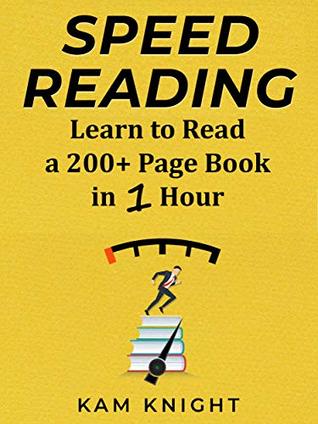More on this book
Community
Kindle Notes & Highlights
by
Kam Knight
Read between
January 4 - January 4, 2023
Before proceeding, please access the bonus guide Conquer Your Internal Resistance to Make More Money, Have Better Relationships, and Live a Fulfilling Life. It’s free and complements this book’s advice to ensure you do more, in less time, and with less effort. Access your free copy at mindlily.com/ir.
Purpose has power with reading as well. When a goal or purpose is applied to a reading assignment, the mind suddenly stops wandering, and instead, becomes focused on the material at hand.
Since purpose has such power, anytime you sit down to read, set a goal or purpose. Determine beforehand what you want or hope to gain from the material.
Clarifying your purpose helps the mind tremendously. Instead of deciding which of the hundred urges to follow, it has a clear directive. It knows what to tune out and where to turn its attention. In other words, if you want your mind to know and pursue your goals and intentions, you must identify and clearly state them.
Therefore, whenever you pick up something to read, state the purpose or intention for reading it. The clearer the purpose, the easier it will be for the mind to grasp the information—and the faster you can sift through it.
The key is to determine why you are reading the text or what you want to know once finished. If reading for an assignment, you might ask why the instructor assigned the chapter or section. Two universal examples include: What can I get out of this material or How will reading it help me?
The purpose of reading for the next few hours is to unwind, relax, and get lost in the author’s tale.
This is how I want you to approach reading, to preview material before reading it. That means scrolling through the text, scanning the table of contents, major headings, any words in bold or italics, visual aids, and any information that seems relevant.
Preview is one of the most valuable steps readers can take to improve reading speed and comprehension. That’s because previewing gives the mind a framework of what will be discussed. It helps the mind understand the type of information that will be presented and how it will be organized.
One reason is that the mind doesn’t necessarily respond to what is happening in real-time, but to what it thinks is going to happen. In other words, the mind is constantly making predictions about the future.
Skilled readers almost never read a text cold. Instead, they examine it first with preview. The practice allows them to begin with a great deal of information already processed. As a result, their mind is not guessing or worrying about what comes next. It can relax and concentrate on what is being read.
Books and Manuals Read the front and back covers. Review the table of contents to get a feel for the organization, and notice if the book is divided into sections or parts. Read the chapter headings to get a sense of the topics that will be covered. Next, read samples of the text. If there is a preface, begin there. Read also the entire introduction and conclusion. Finally, skim through the book and notice items in bold, italics, quotes, and any diagrams or tables. While skimming, read the first and last paragraphs of each chapter.
Some books are to be tasted, others to be swallowed, and some few to be chewed and digested–Francis Bacon
The first method, which I call Space Reading®, will be covered in this chapter. Space Reading directs you to avoid looking at the words you are reading, but rather at the spaces in between the words. That's right—at the spaces between words!
Looking at spaces between words is one technique that directly impacts reading speed and ability. The next chapter will cover the second technique, called chunking. Both methods keep the eyes from fixating on individual words, so that you can naturally soak in more information (Please note: Space Reading® is trademarked and cannot be reproduced without prior express written permission).
When reading, you will either look at spaces or at chunks of words, but not both.
Think before you speak. Read before you think–Fran Lebowitz
This chapter trains you to break a notorious habit called subvocalization, which alone can double to triple reading speed.
As stated, simply silencing the inner narrator can double or triple reading speed right here and right now.
First and foremost, close your mouth when reading. Talking activates many parts of the body, such as the lips, mouth, tongue, jaw, and throat. Subvocalization does as well, but to a lesser degree. Despite being less, it still affects speed.
Read fast-enough so you cannot pronounce words or think about their sounds. Humans speak one word at a time and not three or four. Apply the suggestions in the last two chapters to grab multiple words between each space or chunk.
Perhaps all anxiety might derive from a fixation on moments–Sarah Manguso
Shultz tables can also be found online at the following link: http://www.onedollartips.com/tools/szultz/. Simply type in the number of rows and columns you’d like, and the site will generate a set of custom tables on which to practice.
Great minds discuss ideas; average minds discuss events–Eleanor Roosevelt
Again, this is how most people read, especially students. They notice the details but miss the bigger context or point. As a result, they fail to grasp what they’ve read.
My favorite resource on paragraph structure is at https://learn.lexiconic.net/para2.htm. It’s what helped me understand topic sentences and where I send anybody interested in learning about them.
There is one more habit that slows reading, and that is daydreaming.


